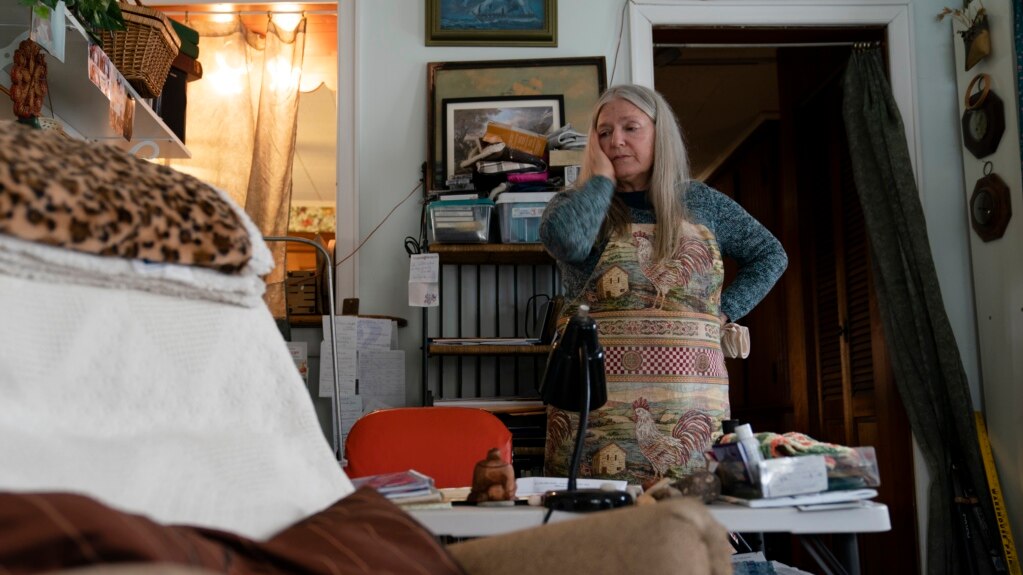From VOA Learning English, this is the Health & Lifestyle Report.
The Centers for Disease Control and Prevention (CDC) has released its most recent estimate for adults with chronic fatigue syndrome.
People with chronic fatigue syndrome (CFS) suffer from at least six months of severe tiredness that is not helped by rest. They can also report pain and mental confusion.
Health officials said the study was the first nationally representative estimate of how many U.S. adults have chronic fatigue syndrome. The study gathered information from 2021 to 2022. It found that 1.3 percent of American adults reported having CFS or something like it.
These numbers from the CDC are larger than earlier studies have suggested. They likely include people with long COVID, a condition of long-lasting sickness after a COVID-19 infection.
The findings led CDC’s Dr. Elizabeth Unger to say that CFS “is not a rare illness.” She was one of the writers of the report.
The tiredness and other symptoms of CFS can get worse after exercise, work, or other activity. There is no cure, and no testing leads to a quick diagnosis.
No known cause
Doctors do not know the cause. However, research suggests it is the body’s overreaction to an infection or other shock to the immune system.
The condition gained attention nearly 40 years ago, when many cases were reported in Incline Village, Nevada, and Lyndonville, New York. Some doctors dismissed it, calling it psychosomatic. Psychosomatic means a problem is mental or emotional rather than physical.
Some doctors also called it “yuppie flu.” “Yuppie” stands for “young, urban professional,” people who have good jobs and medical coverage.
Some doctors still think CFS is a mental condition, experts and patients say.
Doctors “called me a hypochondriac and said it was just anxiety and depression,” said Hannah Powell. She is a 26-year-old woman from Utah who was diagnosed after five years.
New findings from the report
The new CDC report is based on a survey of more than 57,000 U.S. adults. They were asked if a doctor or other health-care professional had ever told them they had myalgic encephalomyelitis, or CFS, and whether they still have it. About 1.3 percent said yes to both questions.
CDC officials said that results in an estimate of 3.3 million U.S. adults.
The study also reported other findings. It said that CFS was more common in women than men. White people reported the condition more than other racial and ethnic groups. Earlier, smaller studies reported similar findings.
The findings showed there was less of a difference between women and men than some earlier studies suggested. And there was little difference between Black and white people.
However, the study also found that a higher percentage of poor people reported the condition than wealthy people.
CFS is not a popular diagnosis
Dr. Brayden Yellman is a specialist at the Bateman Horne Center in Salt Lake City, Utah. He said patients who report the condition usually have health care coverage. He said doctors might believe them more when they say they “continue to be fatigued and can’t go to work.”
The CDC study is based on patients’ memories. It did not use medical records. That could lead to overcounting. However, it is possible that only a percentage of people with CFS are diagnosed, said Dr. Daniel Clauw. He is director of the University of Michigan’s Chronic Pain and Fatigue Research Center.
He added that is not a “popular diagnosis to give because there (are) no drugs approved for it. There (are) no treatment guidelines for it.”
The total number likely includes some patients with long COVID who were suffering from long-term tiredness, CDC officials said.
“We think it’s the same illness,” Yellman said. But long COVID is more widely accepted by doctors and is being diagnosed much more quickly, he said.
Powell, one of Yellman’s patients, was a high school athlete who came down with an illness during a trip to Belize before her final year. Doctors thought she had malaria, and she seemed to recover. But she developed chronic tiredness, had trouble sleeping, and had frequent vomiting. She said she slowly stopped playing sports and had trouble doing schoolwork.
After five years, a doctor said she had chronic fatigue. She began to regain normal life through regular treatments of fluids and medications. She graduated from the University of Utah and now works for an organization that helps domestic violence victims.
Getting care is still a struggle, she said.
“When I go to the (emergency room) or to another doctor’s visit, instead of saying I have chronic fatigue syndrome, I usually say I have long COVID,” Powell said. “And I am believed almost immediately.”
And that’s the Health & Lifestyle Report. I’m Anna Matteo.

